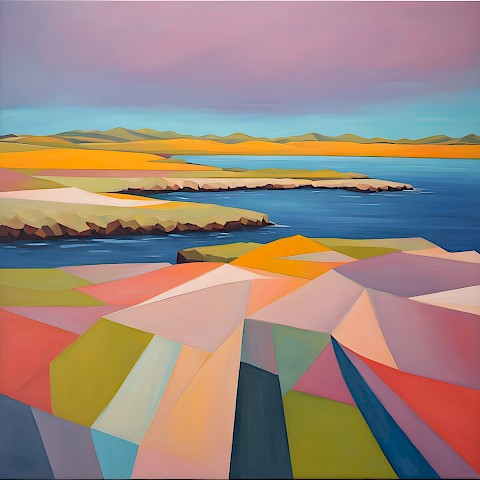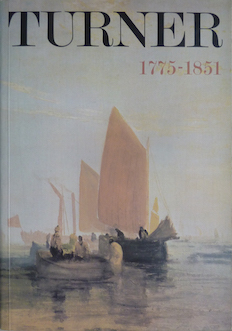|
09 XI 2025 |
18. Last Works 1835-50
620 - Landscape with a River and a Bay in the Distance | |

| ||
|
Without any reasonable doubt to be identified with the picture enthusiastically described by Edmond de Goncourt in his Journal when he spent 'Un après-midi devant les tableaux anglais de Groult'. This may also be one of the Turners mentioned by Camille Pissarro, in a letter to his son written in June 1894, as being in an exhihition in Paria. c an exhihition of the English School is being held, some superb Reynolds, several very beautiful Gainsboroughs, two Turners belonging to Groult which are quite beautiful . . ?. Camille Groult (died 1907) also owned the 'Mountain Scene at Melbourne (No.568). How such pictures left Turner's studio is unknown. Two of the series (see No.623) were sold at Christie's in 1865 from the collection of John Pound, the son by her first marriage of Mrs Sophia Caroline Booth, Turner's mistress and housekeeper in Chelsea. Turner had presumably given these pictures either to her or to her son, but none of the others in the series can be traced back to the Booth/Pound collection (see Michael Kitson, 'Un nouveau Turner au Musée du Louvre' in La Revue du Louvre XIX, 1969, p.254). There remains the possibility that they were among the pictures that were rejected from the Turner Bequest by the executors in 1856 on the grounds that they were not genuine. Against this suggestion must be weighed the fact that these exclusions were made by Sir Charles Eastlake, a friend of Turner's who knew his work well, and that he accepted as part of the Bequest a number of canvases which were still less 'finished' than those in this series (see Michael Kitson, 'Nouvelles Précisions sur le "Paysage" de Turner du Musée du Louvre' in ibid XXI, 1971, p.90). They may simply have remained as a parcel of unstretched canvases, perhaps rolled up together, and have been stolen from Turner's studio by Mrs Booth or by someone else; Stefan Slabczynski, of the Tate Gallery, who cleaned this picture for the Louvre, reported that it had formerly been rolled, as have been others of this group of works. A letter written by Effie Ruskin to her mother on 24 August 1852, telling her that Ruskin had renounced the executorship of Turner's Will as he was sickened by all the dispute over it, continued '... Certain it is that already Turner's lawyer has stolen a bag of drawings' , which makes it sound as if the studio was open to pilfering of this kind. This picture belongs to a series of canvases, probably painted about 1835 or shortly afterwards, which are all connected - some more closely than others - with engravings published in the Liber Studiorum many years before. In this case, the ‘Junction of the Severn and the Wye' (R.28), published in June 1811, and classified as 'E.P.' for Epic, Elegant or Elevated Pastoral, served as the basis, although Chepstow Castle has been omitted from the picture and the composition has in general been very much simplified. Turner's purpose in painting this series (none of which was sold or exhibited during his lifetime) is unclear, but Evelyn Joll suggests that, having made up his mind to leave his pictures to the nation, Turner might have wished to include a cross-section of examples of his late style in his bequest, and that this series formed part of a project which (like the Liber Studiorum) he never completed. For further examples of the reworking of Liber Studiorum subjects see Nos.621, 622, 623, 650 and ?568; not included in the exhibition are 'The Rape of Europa' after the frontispiece, R.1 (Taft Museum, Cincinnati), and "Walton Bridges' after 'The Bridge in Middle Distance', R.13 (Henry S. Morgan, New York). An image generated by an AI Machine Learning Model Property of the artist. | ||
